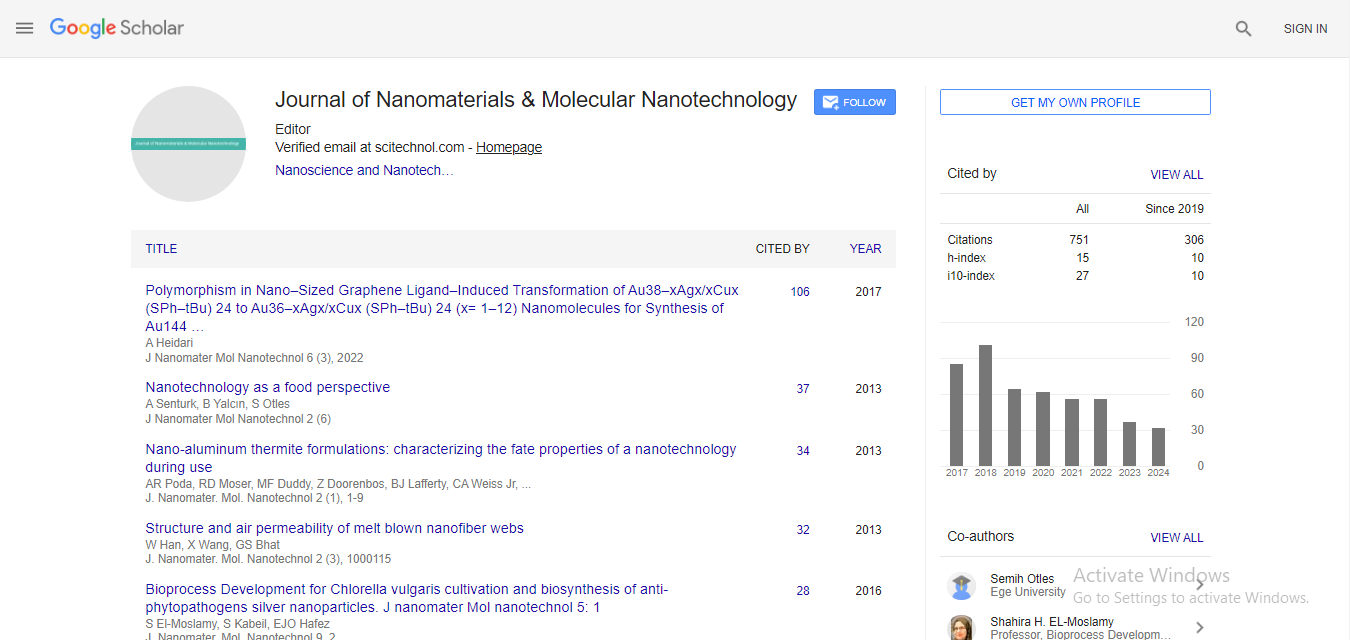A numerical approach for determining representative flow-curve of spherical nanoindentation
Fei-Ya Huang, Yen-Wen Liu and Jui-Chao Kuo
National Cheng-Kung University, Taiwan
: J Nanomater Mol Nanotechnol
Abstract
Nanoindentation techniques have the capability to detect consistently mechanical properties of materials such as Young’s modulus and hardness. More specifically, P-h curve obtained from nanoindentation can be referred to as representative stress-strain curves (RSS) by introducing a constraining factor. Hence, it can be compared to the uniaxial stress-strain curve. Comparing to the sharp indenter, spherical indenter has been used to study the RSS curve due to relatively smoother stress fields’ distributions. However, it remains a significant challenge because the complex stress field beneath the indenter occurs during indenting. In our study, the finite element method was applied to simulate spherical nanoindent and uniaxial tensile tests for elastic-plastic material. We aimed to discover the best agreement between RSS and USS with six protocols of representative strain and three different definitions of determining contact depth. Figure 1 presents a p-h curve of elasticplastic material which was simulated by FE analysis. The maximum depth was set to 600nm. Figure 2 shows an example of the comparison of RSS and USS. The indentation stress was calculated by σr=ð‘ƒ/(3ðÂœ‹ð‘Ž^2 ) where the constant of 3 is the constraint factor. The indentation strains were obtained from Tabor, Johnson, Kalidindi, Milman, and Ahn’s definitions. As shown in Figure 2, the strain of Ahn’s method reveals better agreement than others with the USS curve. However, there is a bit of deviation between USS and RSS at the elastic-plastic transition region. It can be noted that material with small E/Y will cause a long transition region and thus increase the deviation. Furthermore, once the flow curve reaches a plateau, the RSS and USS will not fit with each other anymore because the plastic zone is no longer constrained by surrounding elastic material. In the following works, we will present all combinations of strain and contact depth to observe the relationship between RSS and USS.
Biography
Fei-Ya Huang has received PhD in materials science and engineering from the National Cheng Kung University in Taiwan. She has her expertise in evaluation and passion in investigating the mechanical properties and deformation behavior of metal by nanotechnology including nanoindentation, scanning electron microscopy and electron backscattering diffraction. She is now focusing on the connection between nanoindentation and traditional tensile test and observing the deformation evolution of nanoinentation.
E-mail: a2780490@gmail.com
 Spanish
Spanish  Chinese
Chinese  Russian
Russian  German
German  French
French  Japanese
Japanese  Portuguese
Portuguese  Hindi
Hindi 



